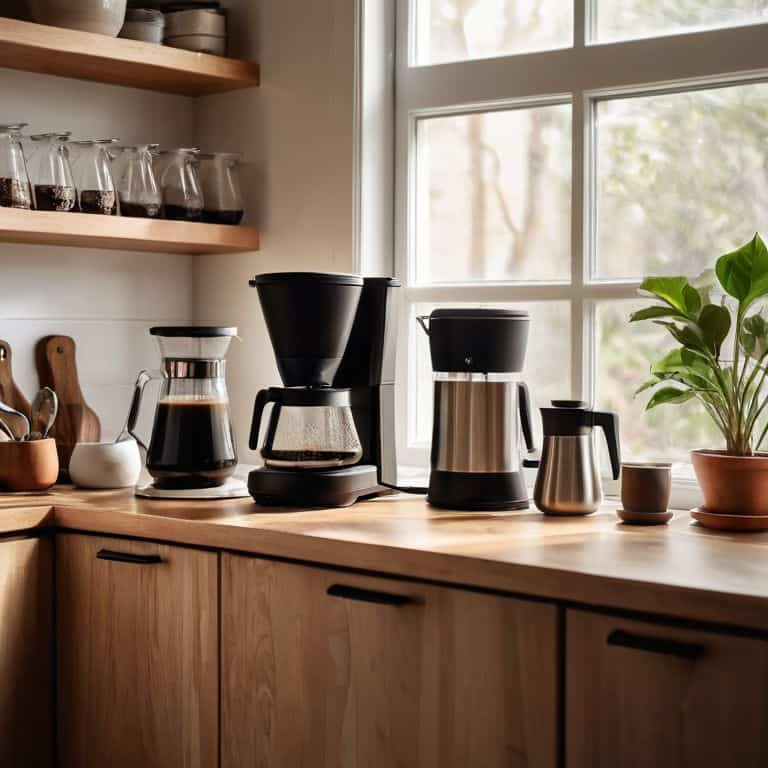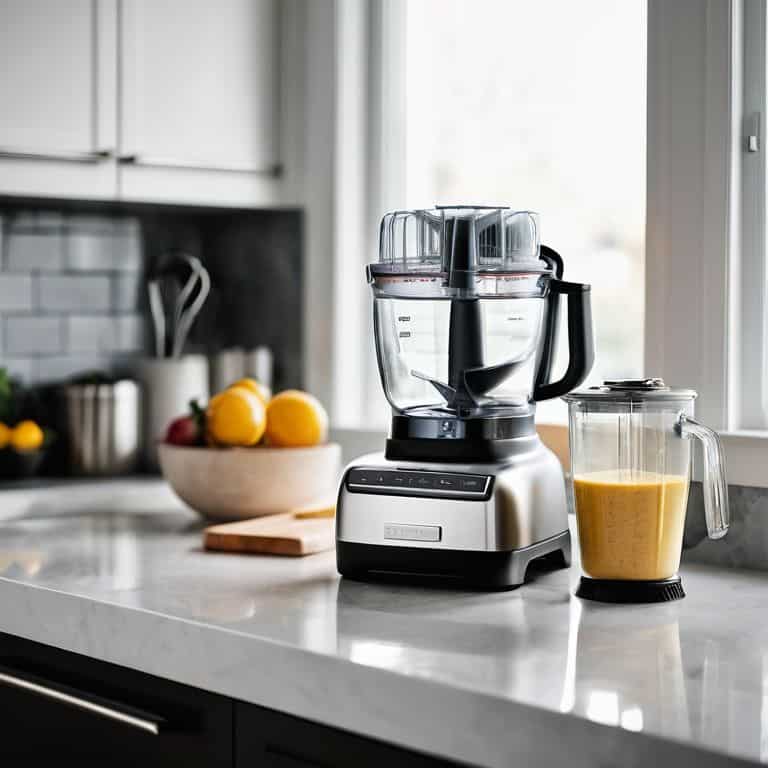I still remember the day I stumbled upon my grandmother’s old, rusty cast iron skillet in the attic. It was love at first sight, but also a bit of a disaster – the once-pristine cookware had been left to gather dust and rust. As I delved into the world of restoring it, I realized that the internet was flooded with misleading advice on how to restore a rusty cast iron skillet. The most common myth? That it’s a tedious, impossible task that requires a miracle worker. But I’m here to tell you that’s just not true.
As someone who’s obsessed with great design and the unboxing experience, I was determined to revive this relic and make it cook like new again. In this article, I’ll share my honest, no-hype advice on how to restore a rusty cast iron skillet. You can expect a straightforward, step-by-step guide that cuts through the clutter and gives you the practical tips you need to succeed. From cleaning and seasoning to maintaining your newly restored skillet, I’ve got you covered. So, if you’re ready to breathe new life into your old cast iron cookware, keep reading – I’ve got the inside scoop on how to make it happen.
Table of Contents
Guide Overview: What You'll Need
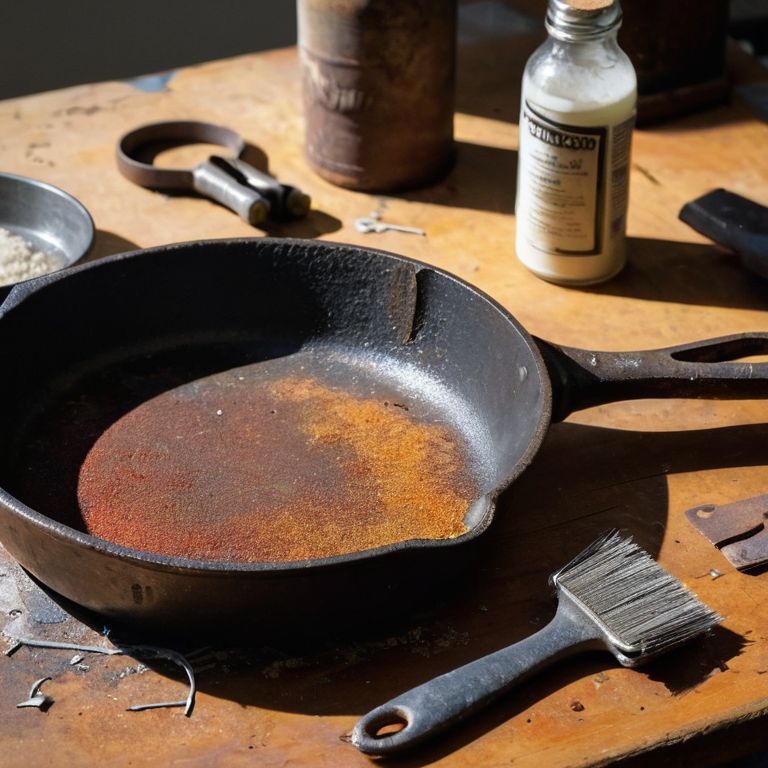
Total Time: 2 hours 30 minutes
Estimated Cost: $20 – $40
Difficulty Level: Intermediate
Tools Required
- Steel wool (medium and fine grades)
- Scouring pad (for tough rust spots)
- Soft brush (for applying oil)
- Oven (for heating the skillet)
- Tongs or oven mitts (for handling hot skillet)
Supplies & Materials
- Baking soda
- Water
- White vinegar
- Cooking oil (such as vegetable or canola oil)
- Paper towels (for drying the skillet)
Step-by-Step Instructions
- 1. First, let’s get started with the initial assessment of your rusty cast iron skillet. Take a good look at the skillet and identify the areas with the most rust buildup. This will help you determine the best course of action for restoration. You’ll want to check for any deep pitting or cracks that may affect the skillet’s performance.
- 2. Next, gather your cleaning supplies, including a stiff brush, a scrubber, and some mild soap. You’ll also need a soft cloth and some warm water to help loosen the rust. I like to use a mixture of equal parts water and white vinegar to create a gentle cleaning solution that won’t damage the skillet’s seasoning.
- 3. Now it’s time to tackle the rust. Use your stiff brush to scrub away any loose debris or rust flakes from the skillet’s surface. Be careful not to scratch the metal, as this can create more problems down the line. Once you’ve removed any loose material, use your scrubber to apply the cleaning solution and work it into a rich lather.
- 4. With the rust loosened, it’s time to rinse the skillet thoroughly with warm water. Use your soft cloth to wipe away any remaining debris or soap residue. You may need to repeat the cleaning process a few times to get the skillet completely clean, but be patient – it’s worth the effort to achieve a smooth finish.
- 5. After the skillet is clean, use a clean towel to dry it thoroughly. This is an important step, as any moisture left on the skillet can cause rust to form again. Once the skillet is dry, apply a thin layer of cooking oil to the surface using a paper towel. This will help re-season the metal and prevent rust from forming in the future.
- 6. To re-season the skillet, place it in the oven at 350°F (175°C) for an hour. This will help the oil penetrate the metal and create a non-stick surface. After the hour is up, turn off the oven and let the skillet cool completely before removing it. You may need to repeat this process a few times to achieve the desired level of seasoning.
- 7. Finally, once the skillet is restored and re-seasoned, it’s time to put it to the test. Cook a simple meal, like scrambled eggs or pancakes, to ensure the skillet is performing well. If everything looks and feels good, you can consider your restoration project a success – and you’ll be enjoying meals cooked in your trusty cast iron skillet for years to come, with a satisfying sense of accomplishment.
Reviving Rusty Relics
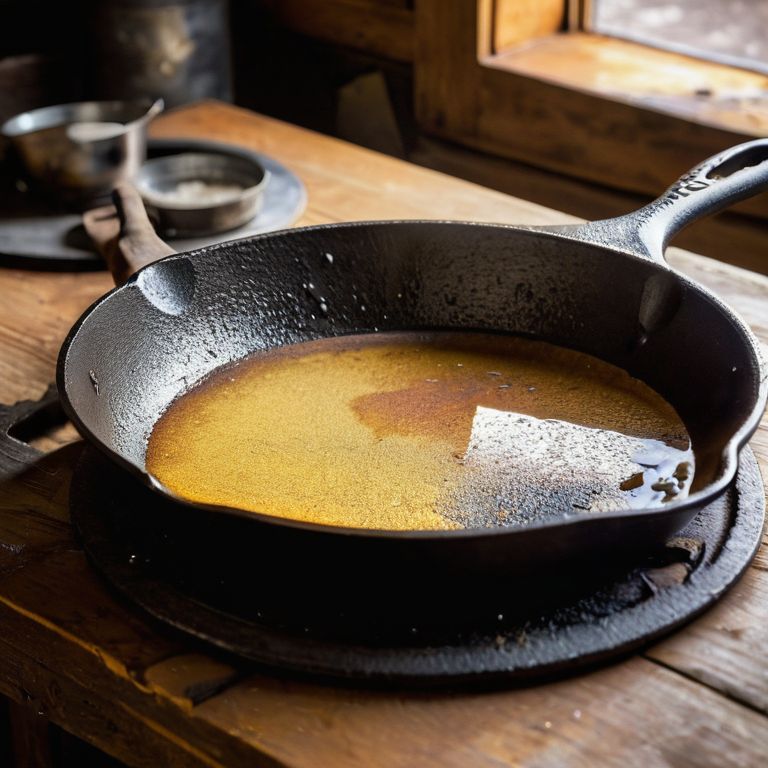
As I delved deeper into the world of cast iron skillet refurbishment, I discovered that removing rust from cast iron cookware is just the first step in a larger process. It’s about breathing new life into a relic that’s been neglected, and with the right techniques, you can make it shine like new. I’ve found that reseasoning a cast iron pan is an art that requires patience, but the end result is well worth the effort.
When it comes to cast iron maintenance tips, I’ve learned that prevention is key. Regular cleaning and drying can go a long way in preventing rust from forming in the first place. However, for those vintage pieces that have been left to gather dust, restoring vintage cast iron skillets requires a gentle touch and a deep understanding of the material. It’s a process that’s both therapeutic and rewarding, as you watch a once-rusty skillet transform into a cooking vessel that’s both functional and beautiful.
In my experience, the right cast iron cookware cleaning methods can make all the difference in the refurbishment process. From gentle scrubbing to meticulous drying, every step counts when it comes to bringing a rusty relic back to life. By following these tips and techniques, you’ll be well on your way to creating a collection of cast iron skillets that are not only functional but also visually stunning, with a patina that tells a story.
Mastering Cast Iron Skillet Refurbishment
Mastering the art of cast iron skillet refurbishment is all about attention to detail and a willingness to get your hands dirty. For me, it’s not just about restoring a piece of cookware, but about giving new life to a piece of history. I’ve found that the key to a successful refurb is in the prep work – taking the time to thoroughly clean and strip away any existing rust or debris. It’s a therapeutic process, really – the scrape of the steel wool, the smell of the vinegar and oil. And when you finally get to see that beautiful, raw metal shine through, it’s incredibly satisfying.
Removing Rust With Ease
When it comes to removing rust, I’ve found that a gentle touch and the right tools make all the difference. I swear by a combination of baking soda and water to create a paste that’s both non-toxic and effective. Apply it to the rusty area, let it sit, and then scrub it off with a soft brush – it’s almost therapeutic. For tougher spots, I’ll break out the big guns: a mixture of vinegar and salt. The acid in the vinegar helps break down the rust, while the salt acts as a gentle abrasive. It’s all about finding that perfect balance between cleaning and preserving the skillet’s integrity.
Refurbishing Relics: 5 Essential Tips to Restore Your Rusty Cast Iron Skillet
- Assess the Damage: Before you start, give your skillet a thorough once-over to determine the extent of the rust damage – it’ll help you decide the best course of action
- Choose Your Cleaning Agent Wisely: Whether you opt for vinegar, baking soda, or a commercial cleaner, make sure it’s suitable for the level of rust you’re dealing with
- Elbow Grease is Key: Don’t be afraid to get a little physical – scrubbing away at that rust with some steel wool or a stiff brush can be therapeutic, and it’s a crucial step in the restoration process
- Dry and Re-Season: Once you’ve removed the rust, it’s essential to thoroughly dry your skillet and apply a new layer of seasoning to prevent future rust from forming
- Maintain the Shine: To keep your newly restored skillet in top condition, make sure to clean and dry it regularly, and consider applying a thin layer of oil to the surface after each use – it’s the secret to a skillet that only gets better with age
Restoring Rusty Cast Iron Skillets: 3 Key Takeaways
Reviving a rusty cast iron skillet is a labor of love that requires patience, elbow grease, and the right techniques to bring it back to its former glory
Mastering the art of cast iron skillet refurbishment involves understanding the importance of proper cleaning, seasoning, and maintenance to prevent rust from forming in the first place
By following the steps outlined and dedicating time to remove rust with ease, you can breathe new life into your rusty relics and enjoy a cooking experience that’s truly worth the hype
Restoring the Past
A rusty cast iron skillet isn’t a lost cause, it’s a blank canvas waiting for a second chance – with the right touch, it can be transformed from a relic into a trusted cooking companion that only gets better with time.
Julian Grey
Restoring Relics to Their Former Glory
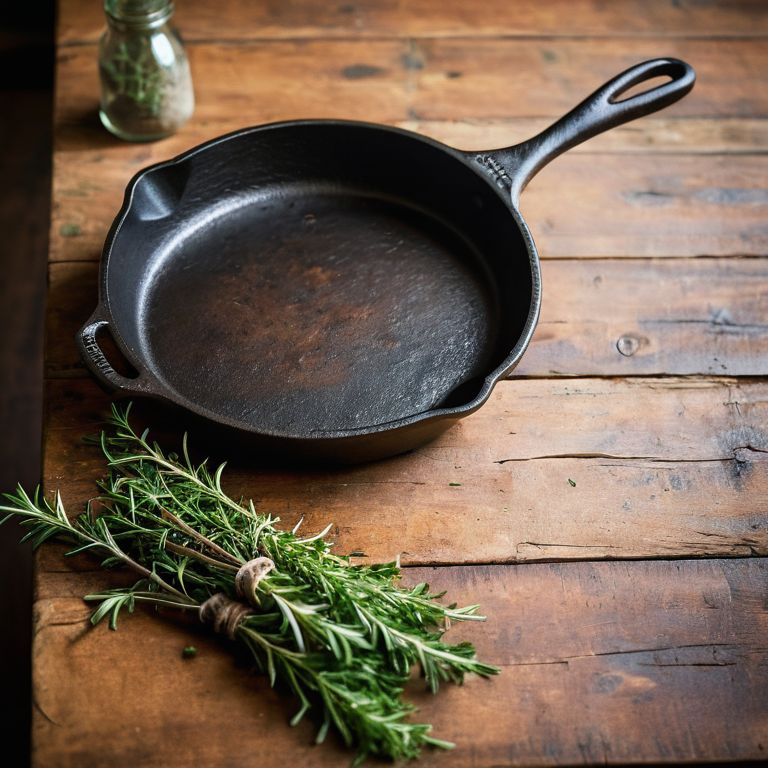
As I conclude my journey of restoring a rusty cast iron skillet, I want to emphasize that the process is not just about reviving a piece of cookware, but about understanding the value of quality craftsmanship. By following the steps outlined, from cleaning and stripping to seasoning and maintenance, you’ll not only revive your skillet but also develop a deeper appreciation for the art of cast iron cookware. It’s about recognizing that with a little patience and effort, you can transform a neglected relic into a trusted cooking companion.
The next time you’re tempted to discard a rusty cast iron skillet, remember that with the right techniques and a bit of love, you can breathe new life into it. As you hold your restored skillet, filled with the aromas of a home-cooked meal, you’ll realize that the true beauty of restoration lies not just in the end result, but in the journey itself – a journey of discovery, of appreciation for the little things, and of the joy that comes from creating something truly special.
Frequently Asked Questions
What are the best methods for removing stubborn rust spots from a cast iron skillet?
For those pesky stubborn rust spots, I swear by a mixture of baking soda and water to create a paste, or a vinegar soak – the acid helps break down the rust. Sometimes, a gentle scrub with a soft brush and some Bar Keepers Friend does the trick, too. Worth the Hype? Absolutely, these methods are tried and true.
Can I use household cleaners or chemicals to restore a rusty cast iron skillet?
Honestly, I’d advise against using household cleaners or harsh chemicals – they can strip the skillet’s seasoning and damage the metal. Instead, opt for a gentle, DIY approach or a specialist cast iron restoration product to preserve the skillet’s integrity and your cooking experience. Worth the Hype? Only if you do it right.
How do I maintain and season my cast iron skillet after restoration to prevent future rust?
To keep your restored cast iron skillet in top shape, I swear by a simple routine: wash with mild soap, dry thoroughly, and apply a thin layer of oil. Re-season every few months, and you’re golden. Trust me, it’s worth the hype – a well-maintained cast iron skillet is a cooking game-changer.

